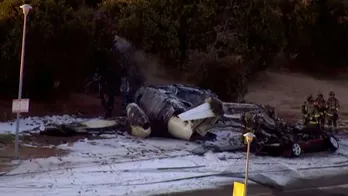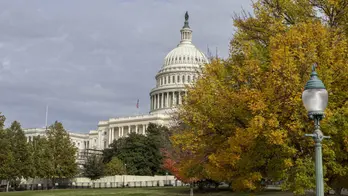A forgotten peace petition started after WWI has resurfaced and is inspiring hope
Dreams of world peace are as old as wars. But as the women of Wales were recovering from World War I, they demanded peace in droves.
Still grieving the husbands, sons, and loved ones who fought in the war, in 1923 the Welsh League of Nations United (WLNU) drafted a petition at Aberystwyth University calling for a warless world.
The petition was signed by roughly three quarters of all the women in Wales and was said to be seven miles long. The document was then packed in a large oak chest and sent across the Atlantic.
It was the WLNU's hope that America would join in their mission for peace, and so they toured with the petition across the country before President Calvin Coolidge gave it to the Smithsonian for preservation.
As the centennial anniversary of World War I approached, a plaque was found in the archives at the Temple of Peace in Cardiff mentioning the petition, but nobody knew what it was, says Mererid Hopwood, chair of the Women's Peace Petition Partnership.
"We hadn't been taught this in school or anything," she said.
"There was a curious plaque sort of thing made of Moroccan leather with gold lettering, bilingual message saying something about this petition that nobody seemed to know about."
So in 2017, an email was sent to the Smithsonian inquiring about the status and location of the chest and its petition.
Both arrived at the National Library of Wales on March 29 this year. Hopwood was there to receive it along with other members of the Peace Petition Partnership and describes opening the chest and finally getting to see its contents as an emotional moment.
"We were given white gloves and were allowed to open just a few to have a look. And as you can imagine, the inevitable thing happened. One of the women in the gathering there ... said, 'Oh, I know that house!'"
Hopwood is hoping more Welsh citizens will have similar experiences now that the petition has returned to its original home. The petition will be digitized, along with all signatures and addresses, so the public can view it online and see if their grandmothers or previous tenants of their homes signed 100 years ago.
Clearly the world has not yet achieved the petition's lofty goals, but Hopwood said the signatures gave her hope.
"These people weren't afraid to think that this was possible, and [had a] common sense approach, 'OK, so how can we do that? Let's call on our sisters in the States to see if they can help bring that about," Hopwood said.
"One of the things we've had as a guiding principle for the partnership is to hold on to hope. And to interpret hope not as a crossing of fingers, but as a power and energy of force that can enable us to do two things: First of all, to see that better place, and secondly, to know the way to get there. It is possible. We have to believe that."
Disclaimer: The copyright of this article belongs to the original author. Reposting this article is solely for the purpose of information dissemination and does not constitute any investment advice. If there is any infringement, please contact us immediately. We will make corrections or deletions as necessary. Thank you.







